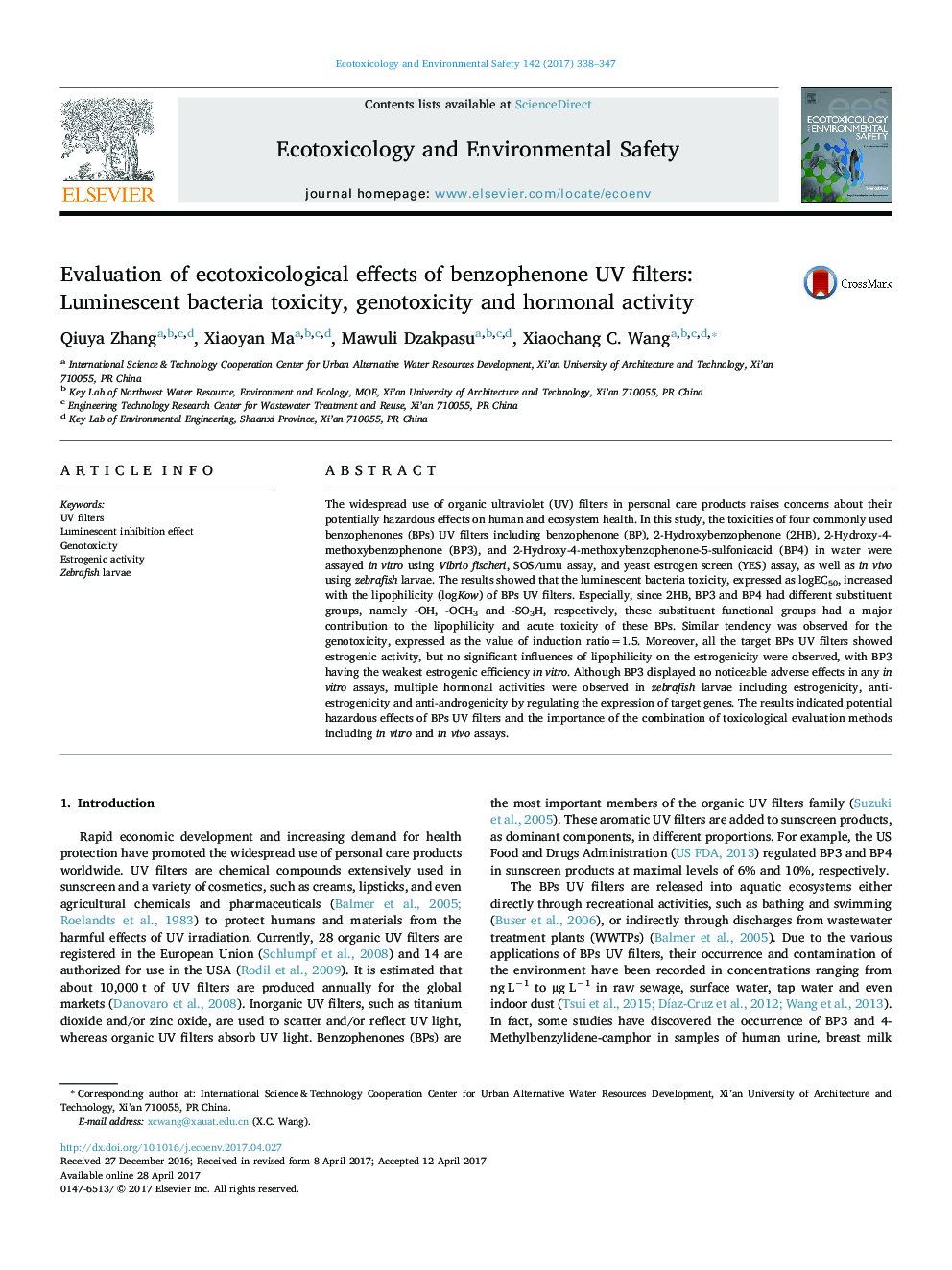| کد مقاله | کد نشریه | سال انتشار | مقاله انگلیسی | نسخه تمام متن |
|---|---|---|---|---|
| 5747615 | 1618922 | 2017 | 10 صفحه PDF | دانلود رایگان |

- Ecotoxicities of 4 benzophenone UV filters (BPs) were evaluated by bioassays.
- The lipophilicity of BPs had influence on genotoxicity and acute toxicity to luminescent bacteria.
- The BPs' substituent groups strongly affected the yeast estrogen screen results.
- Multiple hormonal activities of BP3 were identified by bioassay using zebrafish larvae.
The widespread use of organic ultraviolet (UV) filters in personal care products raises concerns about their potentially hazardous effects on human and ecosystem health. In this study, the toxicities of four commonly used benzophenones (BPs) UV filters including benzophenone (BP), 2-Hydroxybenzophenone (2HB), 2-Hydroxy-4-methoxybenzophenone (BP3), and 2-Hydroxy-4-methoxybenzophenone-5-sulfonicacid (BP4) in water were assayed in vitro using Vibrio fischeri, SOS/umu assay, and yeast estrogen screen (YES) assay, as well as in vivo using zebrafish larvae. The results showed that the luminescent bacteria toxicity, expressed as logEC50, increased with the lipophilicity (logKow) of BPs UV filters. Especially, since 2HB, BP3 and BP4 had different substituent groups, namely -OH, -OCH3 and -SO3H, respectively, these substituent functional groups had a major contribution to the lipophilicity and acute toxicity of these BPs. Similar tendency was observed for the genotoxicity, expressed as the value of induction ratio=1.5. Moreover, all the target BPs UV filters showed estrogenic activity, but no significant influences of lipophilicity on the estrogenicity were observed, with BP3 having the weakest estrogenic efficiency in vitro. Although BP3 displayed no noticeable adverse effects in any in vitro assays, multiple hormonal activities were observed in zebrafish larvae including estrogenicity, anti-estrogenicity and anti-androgenicity by regulating the expression of target genes. The results indicated potential hazardous effects of BPs UV filters and the importance of the combination of toxicological evaluation methods including in vitro and in vivo assays.
Journal: Ecotoxicology and Environmental Safety - Volume 142, August 2017, Pages 338-347